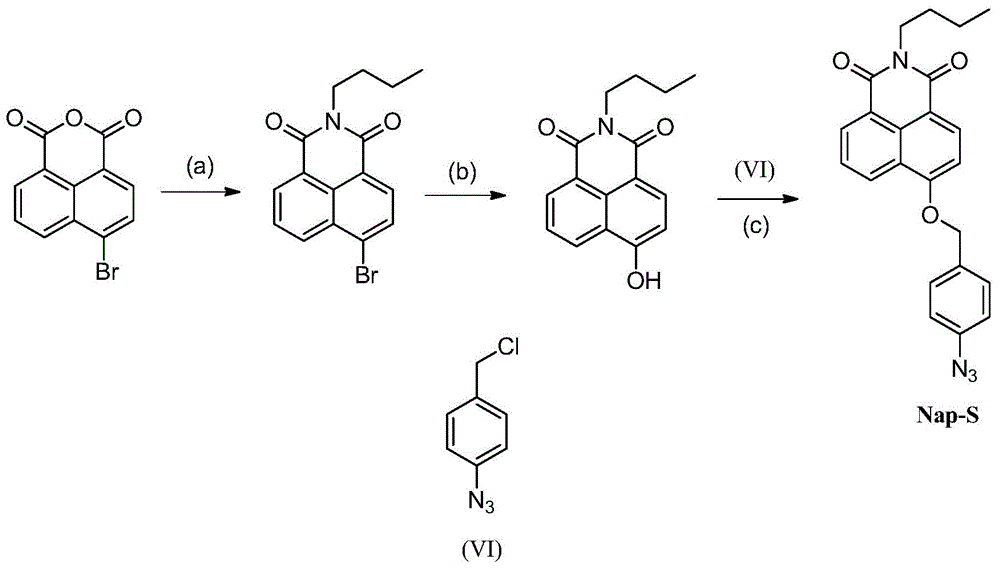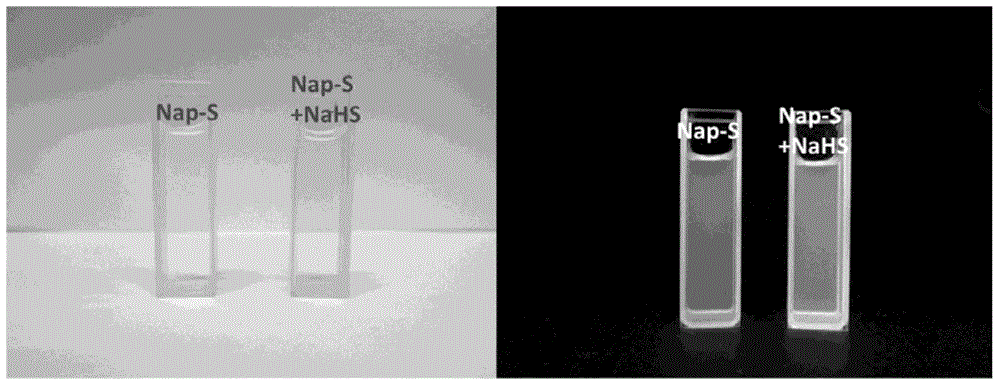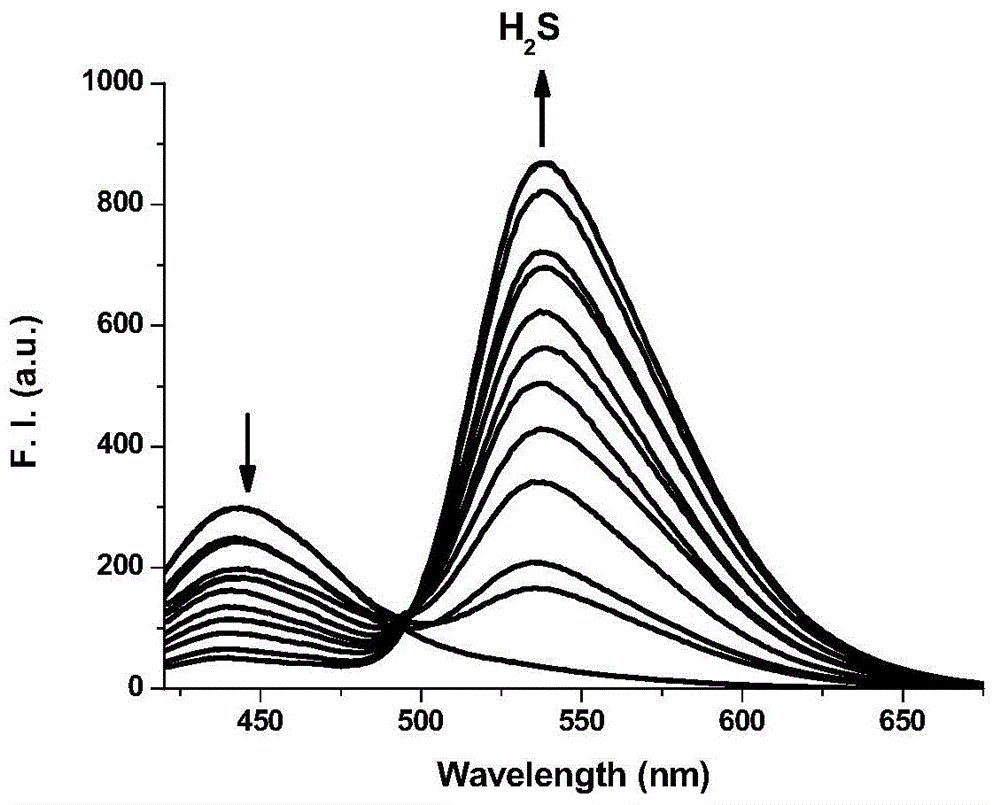Fluorescence probe for detecting hydrogen sulfide as well as preparation method and application method of fluorescence probe
A fluorescent probe and hydrogen sulfide technology, applied in chemical instruments and methods, fluorescence/phosphorescence, luminescent materials, etc., can solve problems such as unfavorable detection, achieve the effects of simple operation, easy promotion and application, and improved sensitivity
- Summary
- Abstract
- Description
- Claims
- Application Information
AI Technical Summary
Problems solved by technology
Method used
Image
Examples
Embodiment 1
[0052] Such as figure 1 Shown, the preparation of embodiment 1, fluorescent probe Nap-S
[0053] Step a): Under an inert atmosphere, add 5.00g of 4-bromo-1,8-naphthalene dicarboxylic anhydride to 100mL of absolute ethanol, then inject 2.5mL of n-butylamine, and reflux at a reaction temperature of 50°C 5 hours. After the reaction was complete, needle-like crystals precipitated after standing overnight, filtered and washed three times with cold ethanol to obtain 4.20 g of intermediate N-n-butyl-4-bromo-1,8-naphthalimide (80% yield).
[0054] Step b): Under an inert atmosphere, cut 2.00g of sodium metal into filaments and add it to 100mL of anhydrous tert-butanol. After the sodium filaments are dissolved, add 3.72g of N-n-butyl-4-bromo to the system -1,8-naphthalimide, at a reaction temperature of 0°C, reflux for 10 hours. After the reaction was complete, 500mL of 1N cold dilute hydrochloric acid was added to the system, a large amount of yellow solids precipitated, filtered, ...
Embodiment 2
[0058] Embodiment 2, the preparation of fluorescent probe Nap-S
[0059] Step a): Under an inert atmosphere, add 5.00g of 4-bromo-1,8-naphthalene dicarboxylic anhydride to 100mL of anhydrous methanol, then inject 5.0mL of n-butylamine, and reflux at a reaction temperature of 80°C 1 hour. After the reaction was complete, needle crystals precipitated after standing overnight, filtered and washed three times with cold ethanol to obtain 4.00 g of intermediate N-n-butyl-4-bromo-1,8-naphthalimide (yield 76%).
[0060] Step b): Under an inert atmosphere, cut 4.00g of sodium metal into filaments and add it to 100mL of anhydrous tert-butanol. After the sodium filaments are dissolved, add 3.72g of N-n-butyl-4-bromo to the system -1,8-naphthalimide, at a reaction temperature of 50°C, reflux reaction for 1 hour. After the reaction was complete, 500 mL of 1N cold dilute hydrochloric acid was added to the system, a large amount of yellow solids precipitated, filtered, washed, and dried in...
Embodiment 3
[0064] Embodiment 3, the preparation of fluorescent probe Nap-S
[0065] Step a): Under an inert atmosphere, add 5.00g of 4-bromo-1,8-naphthalene dicarboxylic anhydride to 100mL of anhydrous ethylene glycol monomethyl ether, then inject 5.0mL of n-butylamine, and react at 120°C Temperature, reflux reaction for 20 hours. After the reaction was complete, needle-like crystals precipitated after standing overnight, filtered and washed three times with cold ethanol to obtain 4.50 g of intermediate N-n-butyl-4-bromo-1,8-naphthalimide (86% yield).
[0066] Step b): Under an inert atmosphere, cut 8.00g of sodium metal into filaments and add it to 100mL of anhydrous isopropanol. After the sodium filaments are dissolved, add 3.72g of N-n-butyl-4-bromo to the system -1,8-naphthalimide, at a reaction temperature of 100°C, reflux for 20 hours. After the reaction was complete, 500mL of 1N cold dilute hydrochloric acid was added to the system, a large amount of yellow solids precipitated, ...
PUM
 Login to View More
Login to View More Abstract
Description
Claims
Application Information
 Login to View More
Login to View More - R&D
- Intellectual Property
- Life Sciences
- Materials
- Tech Scout
- Unparalleled Data Quality
- Higher Quality Content
- 60% Fewer Hallucinations
Browse by: Latest US Patents, China's latest patents, Technical Efficacy Thesaurus, Application Domain, Technology Topic, Popular Technical Reports.
© 2025 PatSnap. All rights reserved.Legal|Privacy policy|Modern Slavery Act Transparency Statement|Sitemap|About US| Contact US: help@patsnap.com



